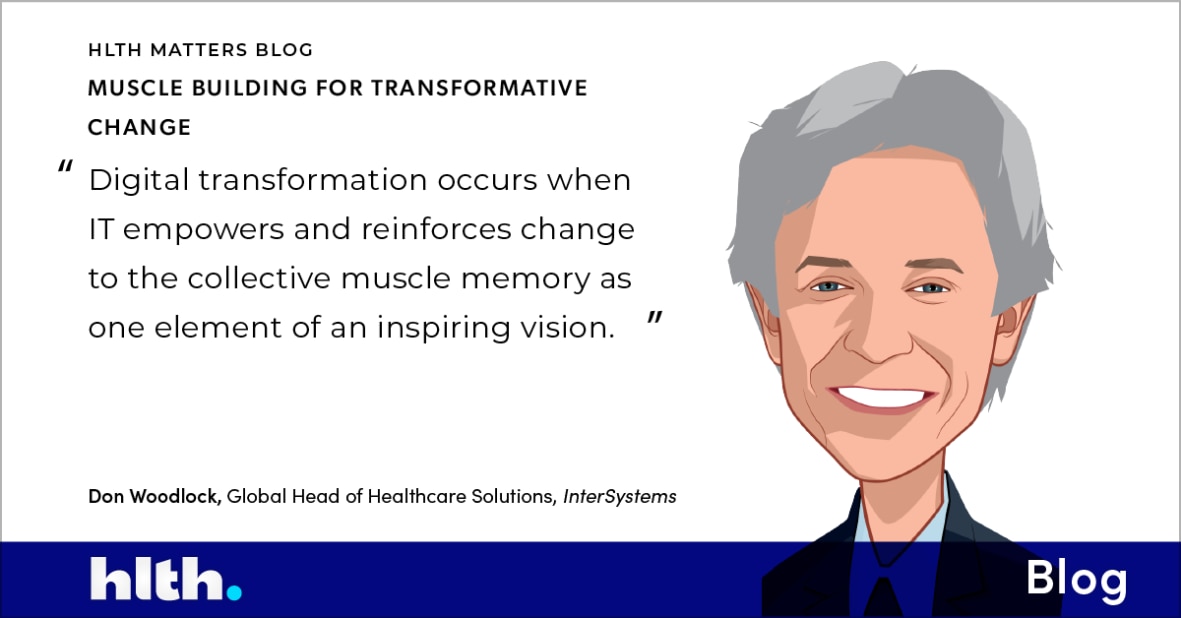Is muscle memory a good thing? Or a bad thing? And how does it hinder digital transformation in healthcare?
Most of us have heard of muscle memory – it’s the embedded learning that comes from repeated practice or exposure to a situation. It’s what allows us to perform a task smoothly, efficiently, and almost unconsciously, for example driving, riding a bike, or playing an instrument.
That seems like a good thing – right? But what if your muscle memory has codified bad behavior? What if you have an inefficient golf swing, or you learned to finger guitar chords the wrong way? In that case, muscle memory can be a trap that holds you back from achieving excellence. Change requires unlearning, and relearning. It’s a process that can be so frustrating you may give up. If you’re really motivated, you’ll make the investment, but you have to be convinced the benefit outweighs the effort.
The concept of muscle memory can be extended to organizations as well. Businesses tend to create processes and culture that reinforce a particular way of operating, making decisions, or working with customers. As with physical actions, organizational muscle memory makes for smooth operations – except when there’s a need for radical change.
Care delivery incorporates both physical muscle memory – inserting an IV, performing a surgical procedure, positioning an imaging device – and organizational muscle memory – shift transitions, pre-procedure checklists, prior authorization processes, etc. Muscle memory – of both sorts – complicates the introduction of health information technology (IT) whether an electronic health record (EHR), a new device, or new analytics, because it disrupts an entrenched process in ways that can slow down performance and lead to intense frustration. For example, studies have shown that EHRs can contribute to physician and nursing burnout.
The incredible challenges facing healthcare providers right now make it imperative that we find better, more efficient ways to manage and deliver care. Staffing shortages are prompting the widespread adoption of virtual first care models. The effective treatment of chronic disease requires a shift from solo to team-based care. Negative operating margins are prompting investments in streamlined and automated revenue cycle management processes. All are theoretically good things, but require substantive changes in the organization, and the individuals that comprise that organization.
In other words, we need to make changes that go against our collective muscle memory.
If we are going to build the new muscle memory that will move healthcare forward, leaders need to:
- Establish a genuine sense of urgency by articulating a compelling vision for why change is necessary, including both the consequences of the status quo, and the benefits of the investment.
- Understand the stakeholders and what matters to each of them. What is worthwhile to the organization may be very different than what matters to the individual – there need to be significant benefits for all to create lasting change.
- “Work with the Willing” and build momentum through incremental quick wins.
- Leverage IT as both a change enabler and a reinforcer. This of course, implies that your technology is designed, configured, and deployed in ways that support desired new behaviors.
Digital transformation occurs when IT empowers and reinforces change to the collective muscle memory as one element of an inspiring vision – perhaps safer care, more time for patients, or better work-life balance. Once you build the muscle memory for the next step in your transformation, it will make it easy to perform moving forward. Change is never easy, but excellence is always worth the investment.
Published first by HLTH:
https://www.hlth.com/digital-content/hlth-matters/blog/muscle-building-for-transformative-change


























